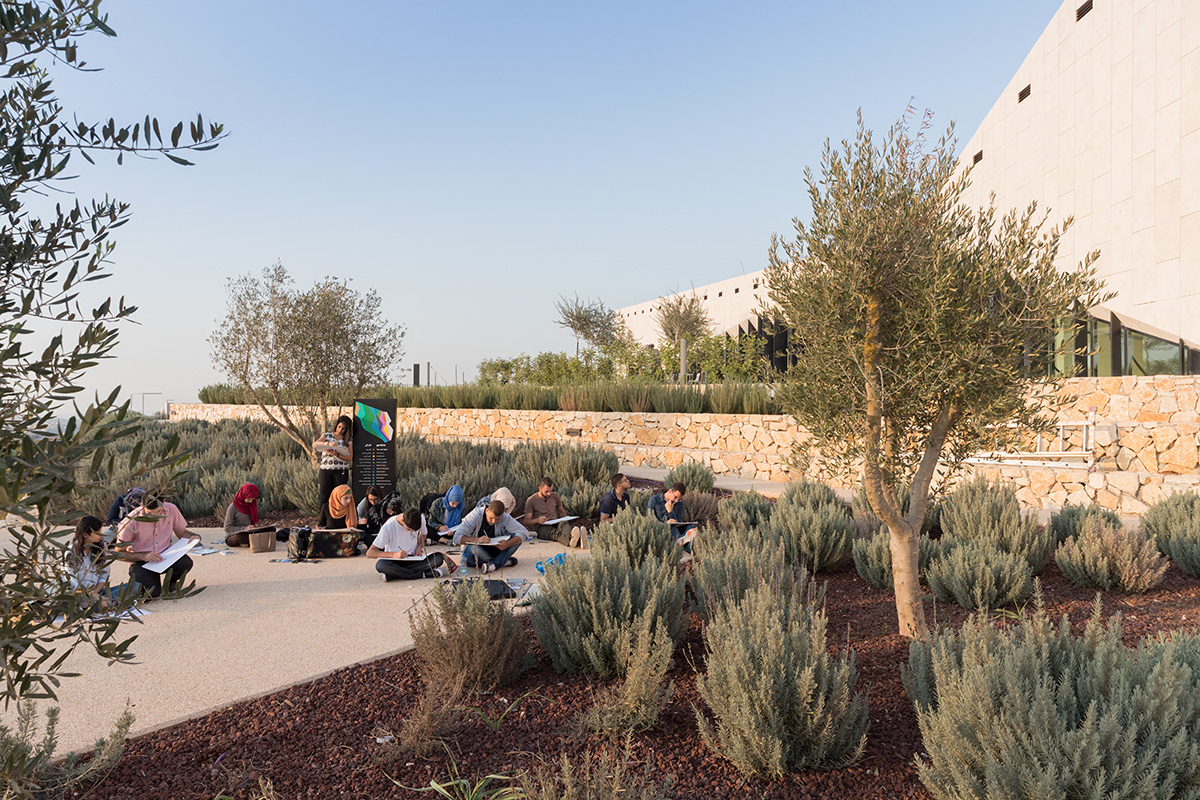| THE MUSEUM The Palestinian Museum - Non-Governmental Association dedicated to supporting an open and dynamic Palestinian culture nationally and internationally. The Museum presents and engages with new perspectives on Palestinian history, society and culture. It also offers spaces for creative ventures, educational programmes and innovative research. The Palestinian Museum is a Swiss-registered non-governmental association with a branch in Palestine. OUR VISION A vital and sustainable Palestinian museum culture OUR MISSION A vibrant museum producing and disseminating creative and emancipatory learning experiences and narratives to the world about Palestine, its people, and its histories, while empowering Palestinians and their communities. GOAL I Tangible and intangible Palestinian cultural heritage is documented, protected, promoted, and made accessible to local communities and wider audiences to enhance resilience under occupation, connect fragmented communities, and enhance global recognition of Palestinian heritage, identities, and futurity. GOAL II Produce and deliver inspiring interactive learning experiences to growing and more diverse audiences. GOAL III Expand the Palestinian Museum networks and partnerships and increase community engagement and transnational solidarity. GOAL IV A vibrant organization that manages its own resources efficiently and sustainably. VALUES - Inclusivity: The Palestinian Museum builds partnerships and bolsters Palestinian communities wherever they are - Excellence: The Palestinian Museum produces verifiably accurate content - Creativity and Innovation:The Palestinian Museum presents novel tools and concepts as well as innovative content across all its platforms - Transparency: The Palestinian Museum is accountable to society and strives to maintain its trust - Independence: The Palestinian Museum is an independent institution with no political affiliations - Inspiration: The Palestinian Museum is a source of hope for a free Palestinian future MUSEUM WITHOUT BORDERS The Palestinian Museum was designed as a transnational institution, capable of overcoming geographical and political boundaries to reach Palestinians within historic Palestine and beyond. Its digital collections and online platforms, alongside its network of local and international partnerships, will allow for the sharing of skills, resources, programmes and exhibitions with individuals and institutions worldwide. OUR STORY In 1997, members of Taawon-Welfare Association wanted to create a museum dedicated to the memory of the Nakba in order to document the catastrophe that shaped the history of modern Palestine as a result of the expulsion from their homeland of more than 60 percent of the country’s Arab inhabitants. With time, however, this idea evolved so that the Museum no longer only focusses on the Nakba, but is now planned as an institution that can celebrate Palestine’s culture more broadly. The Museum aims to do this through a series of innovative and creative programmes that will allow its audience to also reflect on the present in order to imagine a better future. |
|
Type:GalleryThe Inaguration of the Palestinian Museum1221 |
Location The Museum building is located on a 40,000m2 plot next to Birzeit University campus, on a hill over looking the Mediterranean. The site is 7 miles north of Ramallah, and approximately 19 miles from Jerusalem. The Building Design The Palestinian Museum building was designed by Dublin-based architecture company Heneghan Peng and is an exemplar of clean, contemporary design that blends seamlessly with the local rural landscape. The building’s structure references the terraced hills around Birzeit and is surrounded by terraced gardens, planted with trees and flowers local to Palestine. Covering an area of 3500 m2, the building contains exhibition spaces, an open-air amphitheatre, and indoor and outdoor cafeterias as well as classrooms, offices, and storage space. |
| A Green Building The Palestinian Museum is Palestine’s first green building following the (LEED) rating system. In this as in other fields, it aims to present an example of long-term energy sustainability based on international criteria. Energy-saving measures will help the Museum save 15% of its annual energy consumption and 48% of its water consumption. These levels are considered high by international standards. Click here to view and download the LEED manual. |
|
 |
The Palestinian Museum’s Gardens Palestine has a rich and diverse flora and a wide range of non-native plants. The local Palestinian landscape has been shaped by both its own flora and the cultural landscape deriving from the plants that grow in this environment and the related traditions, plants that are either indigenous or have become naturalised over time. This influence is evident in the Palestinian Museum’s gardens, whose design combines the contrasting themes of the “natural landscape” and the “cultural landscape”. Such dynamics are manifested in the variation of the plants, between wild and domesticated plants, in the approach to the building. The gardens, designed by Jordanian landscape architect Lara Zureikat, tell the story of the different phases of the agricultural and plant history of Palestine. Visitors who tour the gardens can enjoy aromatic plants and medical herbs, legumes and field crops, surrounded by wild and fruitful trees. Because they are seasonal by nature, the plants will alternate the roles of presence, hence some will grow and others fade with the change of seasons. Click here to view and download the gardens manual. |
This page has outdated data, please use the main menu to brows the up-to-date website data.